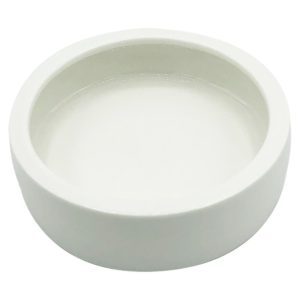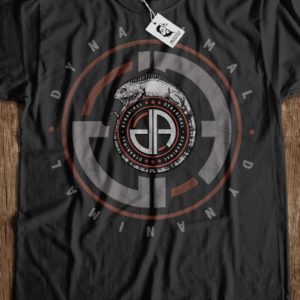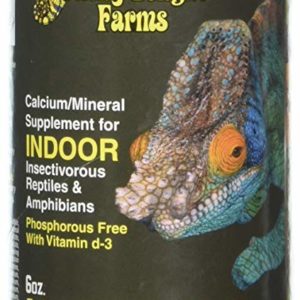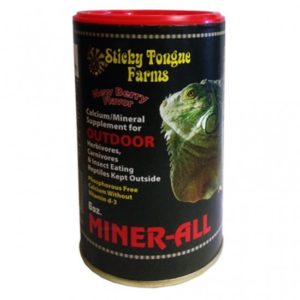Bearded Dragon Care
The inland bearded dragon of the genus Pogona is one of the most recognizable
and often kept lizards today. Their common name comes from their instinctive
habit of blackening and flaring out their throat when excited or angry to seem more
threatening and perhaps larger. While both males and females are capable of this
behavior, it is seen most often in the males when being territorial or when head
bobbing to get a ladies attention.
Bearded dragons are often recommended as one of best lizard pets a keeper can
have. Dragons are great pets, as long as an individual does their research and
ensures proper husbandry is met. While they can be easier than some reptiles, their
care IS involved and can be expensive for some. We will go into more detail on
this below. Pogona vitticeps are known for being tame, vigorous and generally
outgoing animals. Beardies can be a blast to watch as they enthusiastically chase
feeder insects or you relax with them while watching TV for short periods. A
favorite here at DynAnimal is tong feeding Repashy Grub Pie (hyperlink to grub
pie), watching them go after it with gusto never gets old! Another unique and
interesting behavior we see pogona do is arm waving. Waving is characterized
when a dragon lifts one of its front legs and waves in a circular motion, usually at
another dragon and sometimes their human friends. This behavior is most often
considered a submissive gesture.
Housing
As an adult, your dragon will require at least a minimum enclosure size of 36”L x
18”W x 18”H or a 40-gallon breeder style. We recommend providing the largest
size caging you have the space for within your home. Beardies are terrestrial
lizards, so height isn’t as important as square footage; attention to floor space is
one of the most important aspects of any cage design. Providing secure climbing
décor will be utilized and enjoyed. Pogona should always be kept separately; they
are not social animals and do not require friends. Cohabitation of multiple animals
almost always ends in fighting that can cause serious injury or death. Larger
dragons see anything that moves and will fit in their mouth as food, even other
dragons.
Heating
Providing the correct basking temperature for your animal is of utmost importance.
Without being able to thermoregulate properly, they cannot digest their food, or
process vital nutrients. As with most reptiles, you will need to provide a thermal
gradient. We suggest ambient temperatures between 80°f on the “cool” end, up to 95°f on the “hot” side. The “hot” side should include a place to bask, flat ceramic
tiles or stones work well for this. Providing a flat surface your bearded can lay its
entire body on is ideal for proper heat absorption. You may also incorporate
branches to climb in this area, giving even more “hot side” choices. When using
cage décor, ensure all decorations are secure and will not topple over. The basking
area surface temp should be between 105°f – 115°f for a juvenile to an adult
dragon. Keep in mind that 115°f is probably the hottest your animal should see.
We find that slightly lower basking temperatures of 100°f – 105°f work best for
babies up to juveniles. DynAnimal uses and recommends either PAR30 or PAR 20
halogen flood lamps to provide heat for your animals. You will also be successful
using “reptile basking” bulbs, such as the Zoo Med Repti Basking Spot Lamp.
Please keep in mind that there can be many variables when it comes to selecting
what wattage bulb you will need to achieve the right temperatures in your setup.
These include; caging material, caging style, size, and ambient room temps. To
achieve the desired temps, you can use a tabletop dimmer to fine tune or start with
a lower wattage bulb and work up in until the proper temperatures are reached. If
gadgets are your thing; you may also utilize a dimming thermostat such as the ones
manufactured by Vivarium Electronics to control your heat lamp. Please be aware
that if using an all-in-one / MVB style heat / UVB bulb they will not work
correctly on a dimmer or thermostat. If an animal isn’t basking, your basking area
may be too hot. If your animal is constantly basking and never moves away from
the hot spot, your enclosure is most likely not hot enough. Each animal is different
and can have a different preference, getting your setup correct before an animal
arrives is highly advised.
Lighting
Pogona are diurnal agamids (active during the daytime) requiring a 12 to 14-hour
photoperiod. It is extremely important to provide a consistent light schedule, so
your pet doesn’t go off feed or stress. A 12 hour on and 12 hours off cycle is
common and works well for most species. Since they are diurnal, dragons like light
and the use of the halogen flood for heat as mentioned above, in correspondence to
a fluorescent tube gives them a nice bright enclosure. For UVB we suggest and use
linear fluorescent tubes such as Zoo Med Reptisun 10.0’s. Your UVB bulb and
fixture should span ¾ to ½ the total enclosure length given a UVB gradient as they
would see in nature. Your setup will determine what style/type of fluorescent bulbs
you will need. For example, T5HO bulbs work well when placed on a screen top as
screen lids tend to block roughly 30% of the UVB produced; they are also great in
taller / or larger cages. T8’s work well mounted in caging or cages where the
occupants can come within 12” of the bulb.
NOTE: The UVB output of all types of reptile lamps diminishes over time. As a
result, UVB bulbs need to be changed annually regardless if they are still
producing visible light. T8 fluorescents should be replaced every six months while
T5’s can go ten to twelve months.
Click here to shop UVB Lighting
Substrate
What to use in the bottom of an enclosure is a hot and often debated topic with
bearded dragons. There is tons of bad information out there and just as many bad
products. Are you are new to reptiles and overwhelmed with the mixed reviews
you find on what is best for a dragon? DynAnimal recommends using a substrate
that is easily and often changed for the health and cleanliness of your pet. Kraft
paper, butcher paper, newspaper or paper towel are the most common, and easiest
sourced while providing convenience for the keeper. Many keepers are successful
using slate tile, ceramic tile, vinyl shelf liner, linoleum, reptile carpet, or the Exo
Terra “sand mats.” When using carpet or “sand mats,” we suggest having at least
two sets, making cage cleaning quick and easy. For the more experienced keeper,
another option is sand or a sand topsoil blend. If you choose to go this route, we
suggest sifted children’s play sand that can be purchased at any big box home
improvement store. When you are comfortable with your husbandry and your
animal’s requirements, a loose substrate such as Faun Kraft Desert Tessera
(hyperlink fauna kraft tessera) can be used with optimal success. We also
recommend children’s play sand or a mix of sand and soil as other loose options.
Branded for reptile products such as calcium sand, vita sand, died sands, or
crushed walnut should be avoided. Contrary to what is often regurgitated, the
correct type of loose substrate doesn’t cause impaction, improper husbandry and
health compromised animals do.
Water
The use of a water bowl with beardies isn’t necessary and often not recommended.
The majority of the time these just become a bathroom and bacteria cesspool.
Dragons obtain the majority of their hydration via the greens they eat. Soaking
your animal in shallow, tepid water once or twice a week will also facilitate proper
hydration as well as aid in keeping your dragon clean.
Food
Dragons are omnivores by nature eating both insects and leafy greens. Younger
animals require and eat more protein than vegetable matter, while adults are often
the opposite. Baby through juvenile bearded requires higher amounts of insect
protein to grow and develop properly. Spring mix greens are fed to all life stages
daily. Greens are offered in the morning and left in the vivarium all day; any
uneaten food is removed at lights out. Baby through juveniles is fed small, frequent
insect/protein based meals 2-4 times per day. Ideally, as babies, they should be fed
10-12 suitably sized insects 3-4 times a day. You will want to remove all uneaten
insects. Leaving feeders in an enclosure can result in injury or cause unneeded. It is
normal for younger animals to often pick at greens, preferring to fill up on bugs
instead. Behavior such as this isn’t cause for alarm and greens should continue to
be offered daily. Variety is the spice of life, and your scaly pet should be provided
that same luxury. Crickets make up the bulk of insects fed here. DynAnimal also
endorses and uses black soldier fly larvae (BSF or Calci worms) super worms,
mealworms, and roaches such as dubia, hissers or red runners. Hornworms are also
a great treat providing extra hydration. When feeding worms or other non-climbing
insects such as dubia, the use of one of our “no escape” bowls is suggested.
(hyperlink to bowls). Some animals may regurgitate when fed supers or
mealworms, this is usually associated with overeating of those particular items.
Offering less per feeding will often remedy this. Providing a dragon the correctly
sized prey item is paramount. The general rule of thumb is no wider than the space
between the animal’s eyes and no longer than the animals head. Here, we love and
feed the following Repashy products; Grub Pie, Veggie Burger, or Beardie Buffet.
These may be purchased in our web store.
Supplements
All prey and vegetation will nee dusted with a quality supplement such as
Repashy’s Calcium Plus LoD (hyperlink), or Miner-All (hyperlink). We rotate
through both with great success. When using Repashy, there is no need for an
additional vitamin powder. When using Miner-All, we suggest including Zoo
Meds ReptiVite (hyperlink) without D3 two times per week in place of calcium.
Stay away from any supplement brand that is higher than 20,000 IU in D3, while
10,000 IU or less is ideal. We have chosen the brands we offer because they are all
10,000 IU or under.
Click here to shop Nutritional Supplements
Cage Maintenance
Daily:
Remove any uneaten food items, especially insects. Spot clean or change substrate
if needed.
Monthly:
Thoroughly clean the habitat, cage furnishings and food bowl with a 10:1
water/ammonia solution. Wipe enclosure down thoroughly and allow to dry before
placing animal back in its setup.
Inspect cage materials, lamp fixtures, etc. for any damage.
If using a loose substrate, we recommend changing completely at this time. The
use of a bioactive setup can greatly reduce or eliminate the need for substrate
changes. Please research how to utilize a bioactive vivarium properly, it isn’t as
simple as just throwing in the dirt and a clean-up crew. https://faunakraft.com/ is
our preferred choice of loose substrates and why we opted to sell them.
Notes
Before purchasing any live animal, make certain their enclosure is set up properly,
and that you the keeper have everything needed for your animal to flourish and grow.
Husbandry is key and should never be overlooked. It is very important to remember that dragons will / can go through stress from shipping and relocation. It is imperative to give them a few days to adjust to their new home and schedule.
Some signs of stress in a new arrival dragon (or any other
lizard) can be; but not limited to: lack of appetite, slowed or lack of activity,
changes in coloration, hiding / avoiding the basking area, glass surfing and clawing
at the enclosure floor. Erratic behavior usually doesn’t last more than 1-3 days. If it
does, please let us know immediately.




